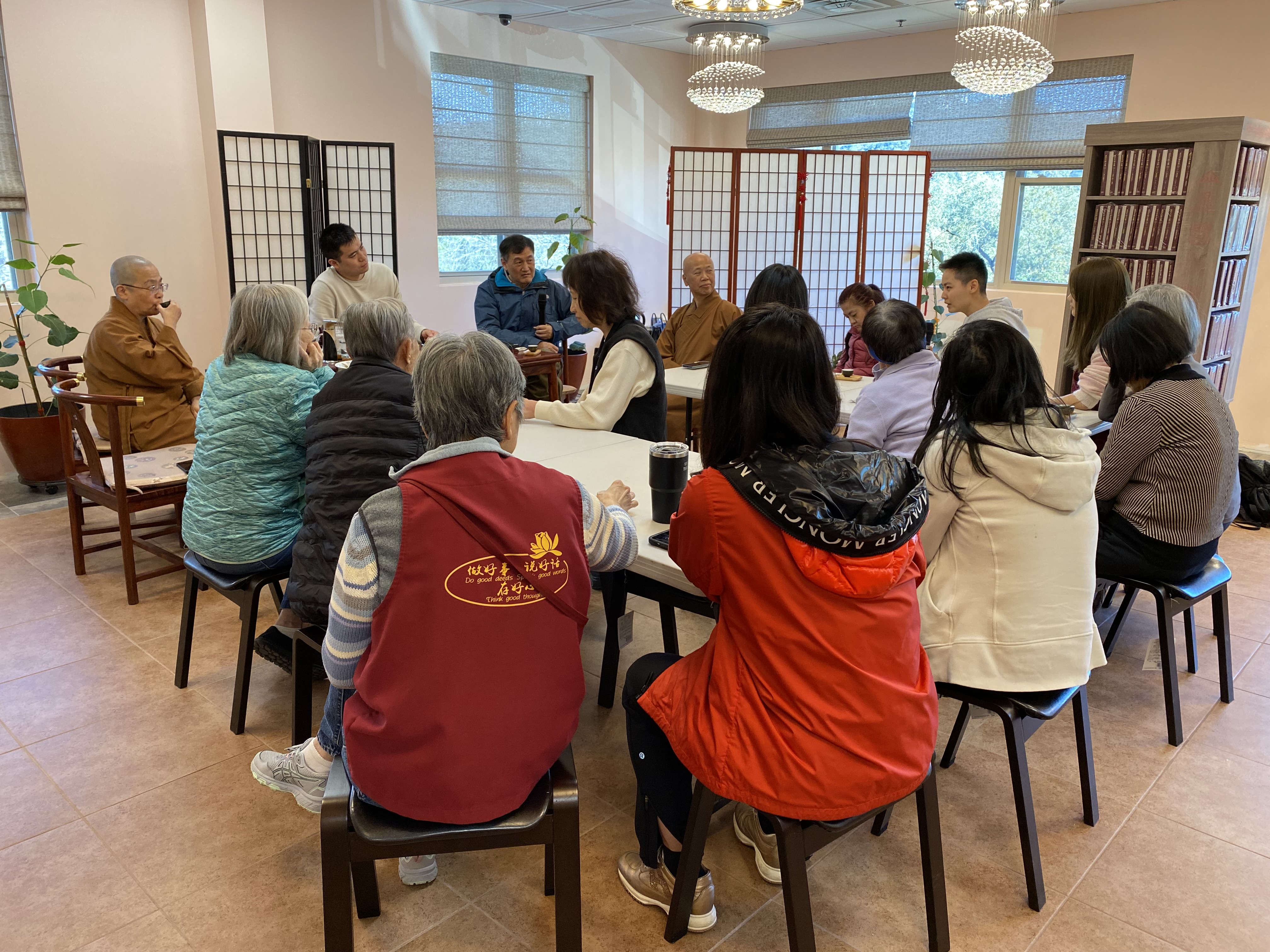01/28/2024
Austin Xiangyun Temple Lecture Series - Laozi and Zen
On the morning of January 28th, after the dharma service, continuing from the previous two weeks of lectures on "Laozi and Zen" by Teacher Wang Shuo, today marked the third part. In this session, Teacher Wang Shuo elaborated on Laozi's theories regarding the "Three Stages of Awakening" and "Introduction through Stories." Over 50 people participated.
Teacher Wang compared the "Tao Te Ching" with the "Diamond Sutra" and identified eight significant similarities: 1. Laozi and Buddha were born in a similar period, and both scriptures are products of the same era. 2. Both texts are extremely concise, containing around five thousand characters each. 3. Similar concepts are used in both, with corresponding ideas such as Laozi's naturalness, constant Tao, Dao application, hearing the Dao, non-action, aligning with Buddha's Tathagata, Nirvana, sentient beings, enlightenment, and non-dualistic phenomena. 4. Laozi wrote the "Tao Te Ching" in response to Yin Xi's request, and Buddha spoke the "Diamond Sutra" at the request of Subhuti, both presenting the causal stories of teacher-student transmission. 5. Both scriptures discuss the "Three Stages of Awakening" - seeking knowledge, hearing the Dao, and the silent teaching - with over thirty instances found concentrated and scattered throughout the "Diamond Sutra." 6. Expressions like Laozi's "Trying to describe, trying to give a name” and Buddha's expressions on Vulture Peak and the flower sermon all derive from story-based discussions. 7. Both scriptures conclude by elucidating the "Three Stages of Awakening," with the "Diamond Sutra" stating, "All conditioned phenomena are like a dream, an illusion, a bubble, a shadow." The "Tao Te Ching" concludes with, "The way of heaven benefits and does not harm; the way of the sage is to act but not contend." Both scriptures' narratives explain the "Three Stages of Awakening." 8. The "Diamond Sutra" states that there is no distinction between mind, Buddha, and sentient beings. The "Tao Te Ching" discusses three perspectives on knowledge and conduct: common people, the wise, and saints. Both have ultimate philosophical positions and a worldview and methodology of "dividing one into three."
In conclusion, Teacher Wang used the purpose of the "Three Stages of Awakening" to summarize the entire lecture series on "Laozi and Zen," stating that both Buddha and Laozi said, "I have said so much, yet I haven't said anything."
The audience was captivated, seizing the last opportunity to inquire with Mr. Wang after lunch. When Teacher Wang mentioned Buddhism's concept of reincarnation and Laozi's concept of cycles, discussing the cycle from birth to death without involving the unknowable parts, it made people think of the "Diamond Sutra," which says the three minds cannot be obtained, emphasizing the importance of aligning with the present moment's interest. As time passed, it was suddenly past the scheduled 2:30, and everyone thanked Teacher Wang for his compassionate guidance. From the perspective of comparing the two scriptures, participants gained a deeper insight into the "Diamond Sutra," increasing their understanding and interest in it.

